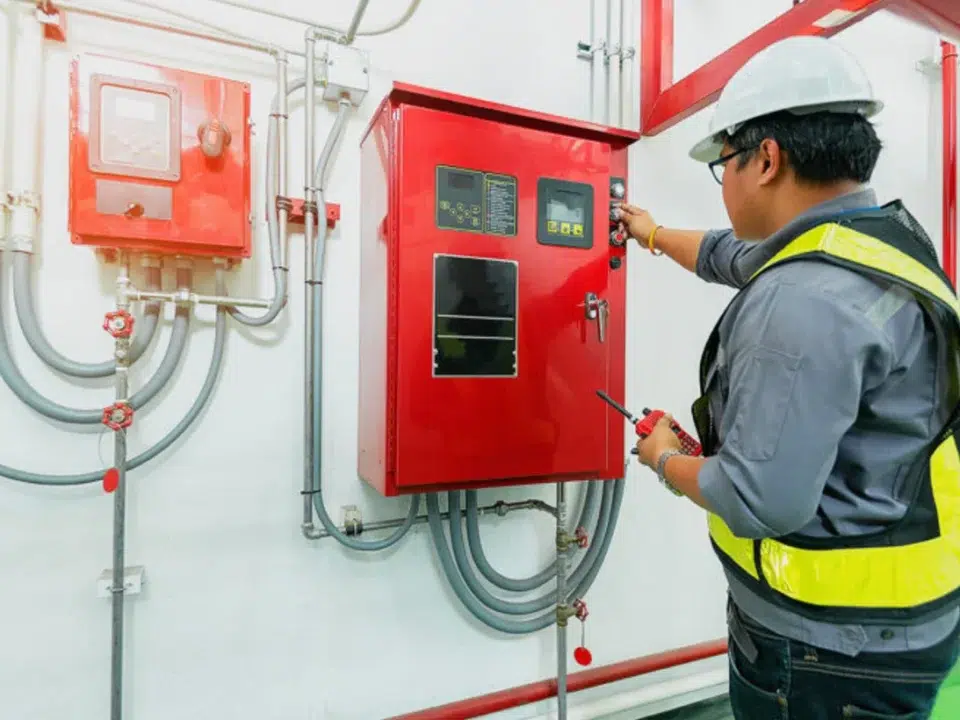Fire Safety & Emergency Preparedness for Factories in Punjab: What You Must Know

Building a Safety Culture in Punjab Manufacturing Sites: A 12-Month Roadmap
November 11, 2025Industrial growth in Punjab has been rapid, with factories in Ludhiana, Mohali, and Bathinda driving much of the state’s economic output. But this expansion also brings heightened risks—especially fire incidents that can result in heavy losses, injuries, and downtime. Fire safety and emergency preparedness are not optional—they are operational necessities. This guide outlines the key steps every factory owner, manager, and EHS professional in Punjab should understand to build a resilient, compliant, and well-prepared facility.
Understanding the Fire Risk Landscape in Punjab
Manufacturing units in Punjab, especially those in textile, chemical, and engineering sectors, deal with combustible materials, high-temperature processes, and heavy machinery. These elements increase the likelihood of fire hazards if not managed proactively. The region’s dense industrial clusters also make fire spread and emergency response coordination more complex.
Regular inspections, staff awareness, and adherence to fire norms can drastically reduce these risks and safeguard both people and assets.
Legal and Regulatory Requirements
Punjab factories must comply with several safety regulations, including:
- Factories Act, 1948: Mandates provision and maintenance of fire-fighting equipment.
- National Building Code (NBC): Specifies fire safety design and layout requirements.
- Punjab Factory Rules: Require adequate escape routes, alarms, and training for workers.
- Local Fire Department NOCs: Annual certification for operational compliance.
Ignoring these regulations not only risks legal penalties but can also invalidate insurance claims after an incident.
Conducting a Comprehensive Fire Safety Assessment
Start with a detailed Fire Audit to evaluate your site’s readiness. The audit assesses:
- Fire detection and alarm systems
- Availability and placement of extinguishers and hydrants
- Electrical wiring and maintenance practices
- Emergency exit design and signage visibility
- Fire load and evacuation time calculations
A professional audit helps identify weak spots that internal teams often overlook, ensuring compliance and risk mitigation.
Key Elements of an Effective Fire Safety Plan
A well-defined plan acts as the backbone of your preparedness system. Every factory in Punjab should implement:
1. Fire Prevention Protocols
- Proper housekeeping and waste disposal.
- Storage of chemicals and flammable materials in ventilated areas.
- Routine maintenance of machines and circuits.
2. Fire Protection Systems
- Installation of automatic sprinklers and smoke detectors.
- Regular inspection of hydrants and fire pumps.
- Backup power for alarms and communication systems.
3. Emergency Evacuation Plans
- Clearly marked exit routes and assembly areas.
- Floor-wise evacuation maps.
- Periodic evacuation drills for all employees.
4. Employee Training
- Conduct safety drills every quarter.
- Train designated fire marshals for each department.
- Educate workers on using extinguishers and handling emergencies.
Integrating a Safety Management System
Fire preparedness cannot operate in isolation. Integrate it into a broader safety framework through a Safety Audit. This ensures coordination between equipment, processes, and human behavior. A robust audit uncovers not only fire risks but also process, electrical, and occupational safety issues that can trigger emergencies.
Additionally, adopting Process Safety Management is crucial for chemical and manufacturing units. It ensures that safety controls are embedded throughout the production cycle—from design and operation to maintenance and modification—helping prevent catastrophic incidents.
Identifying and Managing Process Hazards
Factories dealing with chemicals, fuels, or complex machinery should conduct a Hazop Study (Hazard and Operability Study). This systematic assessment identifies potential deviations in process parameters that could cause unsafe conditions, fires, or explosions.
Key outcomes of a Hazop include:
- Detailed identification of process-related fire risks
- Control measures for hazardous chemical handling
- Recommendations for fail-safe mechanisms and emergency response
A Hazop-driven approach builds a proactive safety mindset rather than a reactive one.
Building a Culture of Fire Safety Awareness
Awareness is the foundation of prevention. A strong fire safety culture ensures that every employee—from workers to supervisors—understands their role in emergency response.
Practical steps include:
- Weekly toolbox talks focusing on fire prevention.
- Displaying do’s and don’ts at high-risk zones.
- Recognizing teams that demonstrate exemplary safety behavior.
Safety becomes sustainable only when it’s owned collectively.
Emergency Preparedness: The Ultimate Test
When a fire breaks out, seconds matter. A structured emergency preparedness system ensures everyone knows what to do without confusion.
Core components:
- Quick alarm activation and communication protocol.
- On-site fire response team trained to handle small incidents.
- Coordination with local fire departments and hospitals.
- Real-time evacuation tracking and headcounts.
Mock drills should simulate realistic scenarios to test these systems. Review performance after every drill to improve coordination and response efficiency.
Leveraging Technology for Fire Safety
Modern factories in Punjab can enhance fire management using:
- IoT-based smoke and gas detectors for early warnings.
- Thermal imaging cameras for heat monitoring.
- Cloud-based emergency dashboards to track responses.
- AI-based predictive analytics to flag potential fire hazards.
Technology not only improves speed and accuracy but also ensures continuous monitoring without manual errors.
Periodic Review and Continuous Improvement
Fire safety isn’t a one-time compliance task—it’s a continuous improvement cycle. Review your safety systems at least twice a year. Update evacuation maps, inspect extinguishers, and recalibrate sensors. Most importantly, analyze every near-miss or small fire to identify root causes and prevent recurrence.
Integrate insights from audits and incidents into updated standard operating procedures (SOPs). Continuous learning and refinement are what separate reactive factories from truly resilient ones.
Conclusion
Factories in Punjab must move beyond reactive compliance and build a proactive safety ecosystem. Regular Fire Audits, safety reviews, and training initiatives not only safeguard lives but also protect business continuity. By implementing Process Safety Management, conducting Hazop Studies, and ensuring periodic Safety Audits, industries can prevent disasters before they occur.
A well-prepared factory doesn’t just respond to emergencies—it prevents them. And in today’s competitive manufacturing landscape, that’s not just smart safety—it’s smart business.




